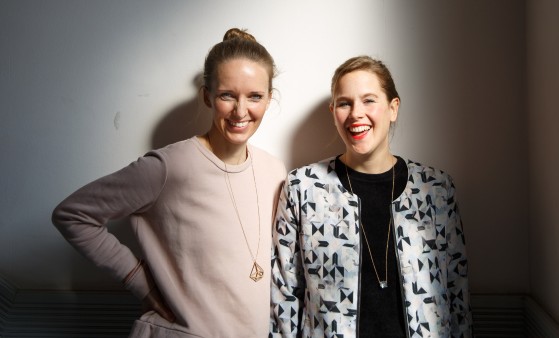It is often difficult to find women in management and top-level executive positions in German companies. Germany has a lot of catching up to do, both nationally in the SME sector and also when compared to other countries. KfW Economist Dr Jennifer Abel-Koch und Dr Michael Schwartz talk about reasons for the lack of women in management positions.
About Mrs Abel-Koch

Dr Jennifer Abel-Koch has been an economist at KfW since 2014. The focus of her study is women in management positions in Europe.
Ms Abel-Koch, in your study about women in management positions, you write that most of the managers in Europe are men. What exactly does that mean?
JENNIFER ABEL-KOCH: In the European Union, less than one third of middle and senior management positions are held by women. In larger companies and top-level executive positions the percentage of women is even lower. However, each country demonstrates specific differences. Particularly in the Scandinavian and Baltic countries and in Eastern Europe, there is more female representation in management. Germany is relatively weak in comparison. Italy brings up the rear, as does Luxembourg, which is surprising.
Mr Schwartz, the focus of your study was on Germany. How is the current situation here?
MICHAEL SCHWARTZ: At KfW Research, we regularly examine developments in the percentage of women in top-level executive positions of mid-sized companies in Germany. And that is where we have even seen a downward trend for several years. Despite positive overall societal development, fewer and fewer women decide to manage a small or mid-sized company.
About Mr Schwartz

Dr Michael Schwartz has been an economist at KfW since 2012. The focus of his study is female executives at medium-size enterprises in Germany.
How come?
SCHWARTZ: It may sound paradoxical, but we largely attribute the negative trend to the excellent situation the German labour market has experienced over the last few years. As a result, the participation of women in the labour force has risen much more than that of men. At the same time, the proportion of women becoming self-employed and taking the risk of becoming business founders has decreased. Employment is often viewed as the more secure and attractive alternative.
Do you think that more women will be promoted to management positions in the near future?
SCHWARTZ: In general, a future scenario where the number of female top-level executives matches the number of males still faces many hurdles. Traditional role models are just one of the factors affecting this. The fact that there are often still few opportunities to reconcile family and a career is an essential point because women usually still bear most of the responsibility for childcare. This also contributes to the fact that fewer women are sitting at the helm of companies.
ABEL-KOCH: Reconciling family and career is important, of course. But, as an example, even though the political framework conditions for this are significantly worse in countries like the US when compared to many European countries, American companies have a much higher percentage of women. Based on that fact alone, work-life balance is not the critical factor.
Which approaches do you think are promising when it comes to making it possible for more women to enter management positions?
ABEL-KOCH: Empirical studies show that companies that have part-time management positions, in a tandem model for example, have significantly higher percentages of women. This requires the appropriate corporate culture. Of course there are many other approaches, the most controversial of which is surely the quota. There is a possibility that it could ultimately facilitate changes within corporate culture, but it is also associated with difficulties. For this reason, I tend to view this approach sceptically.
SCHWARTZ: Change is a long-term process. It simply takes time for entrenched role models to change. We can create the framework conditions and at least ensure that all people have the same opportunities. There is no reason not to do that. If we take a closer look at current female business owners, it becomes clear: women are better educated than male managers, on average. For example, they are much more likely to hold a university degree. So the reason that women are less likely to manage a company cannot be due to a lack of qualifications.
Successful women in management
Antje von Dewitz
The managing director of the outdoor supplier Vaude is the mother of four children and offers employees individually designed part-time models, among other things: ”Our company offers home office, sports and relaxation courses, a nursery and an organic cafeteria.”
In your study, were you able to see clear differences between large and mid-sized companies?
ABEL-KOCH: Not every country has comparable data for small, mid-sized and large companies. But the trend is: the larger the company and the higher the management position, the lower the percentage of women. Germany is no exception here. The percentage of women managers in the German SME sector is around 15 per cent; not a single one of the 30 largest listed companies in this country has one single female CEO. The EU average is around 6.5 per cent. That is still very small, but at least it is not zero.
SCHWARTZ: The following also applies in the German SME sector: as the size of companies increases, the percentage of women managing these companies decreases. This also has various causes. One of them is that women tend to choose smaller corporate structures. We cannot underestimate the significance of this.
What exactly do you mean by that?
SCHWARTZ: We have to look at the industries with higher percentages of women in top-level corporate positions. Approximately a third of all women-managed companies are in the personal services industry, areas like care, training and education, culture. Then another third provides business-related services, for example, law firms, architecture and engineering offices, financial consulting and things like that. This alone already makes up two thirds. These companies are not particularly large on average and also tend to demonstrate slower growth. And this is also one reason that women are less likely to be in top-level management positions in larger companies.
Who is currently ahead when it comes to the percentage of women in management positions, the SME sector? Or large companies?
SCHWARTZ: Only the administrative boards of listed companies manage to fill the prescribed quota – but only just. In contrast, the percentage of female members of executive boards is only about eight per cent. Of course, this is significantly less than what we see in the SME sector. Small and mid-sized companies in Germany are already much further ahead in that aspect.
Published on KfW Stories: Thursday, 28 February 2019






















Data protection principles
If you click on one of the following icons, your data will be sent to the corresponding social network.
Privacy information